|
|
Post by missouriboy on Mar 23, 2024 12:50:30 GMT
Mann argues that the AMO doesn’t exist. There may well be political pressure to stop publishing data suggesting that it does exist. Anything that squeeks of cycles is anti-Mannish. |
|
|
|
Post by missouriboy on Mar 23, 2024 13:07:28 GMT
Watch out Gulf of Mexico. Maybe he will be as wrong as the BoM was in predicting drought last year? Look at the position of the ascending limb of the Ferrel cells under normal El Nino and La Nina conditions. Could that explain a concentrated westward spatial shift in storm tracks? I like his spatial statistical approach. We will see what fruit will grow. 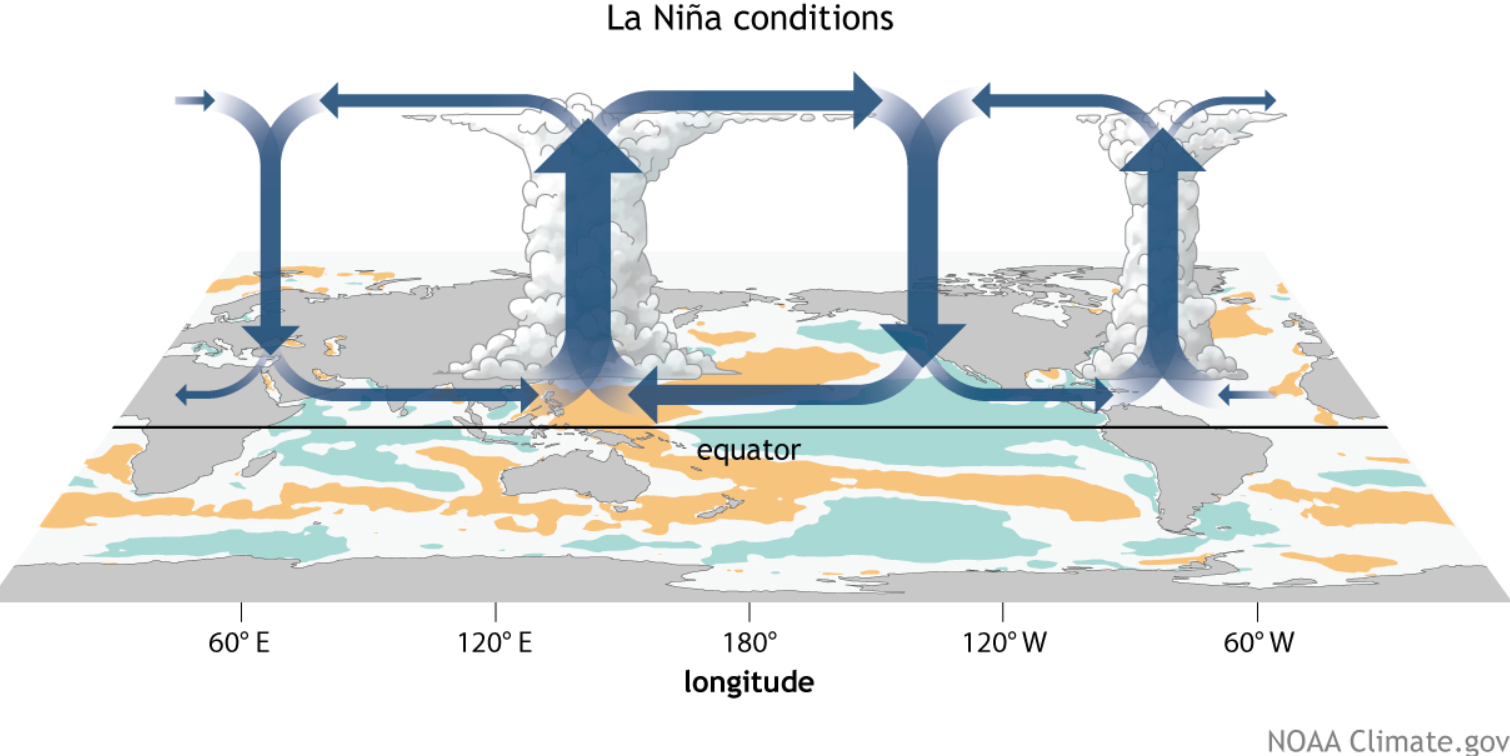 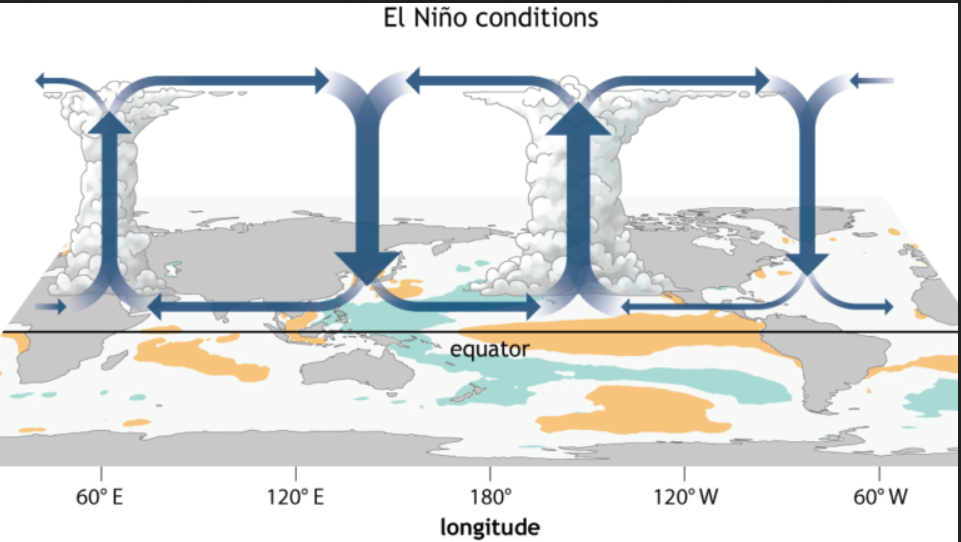 |
|
|
|
Post by code on Mar 23, 2024 15:16:13 GMT
Repeat of the post-peak La Ninas of SC20? Or there abouts? First 82 months of solar cycles 19 - 25. 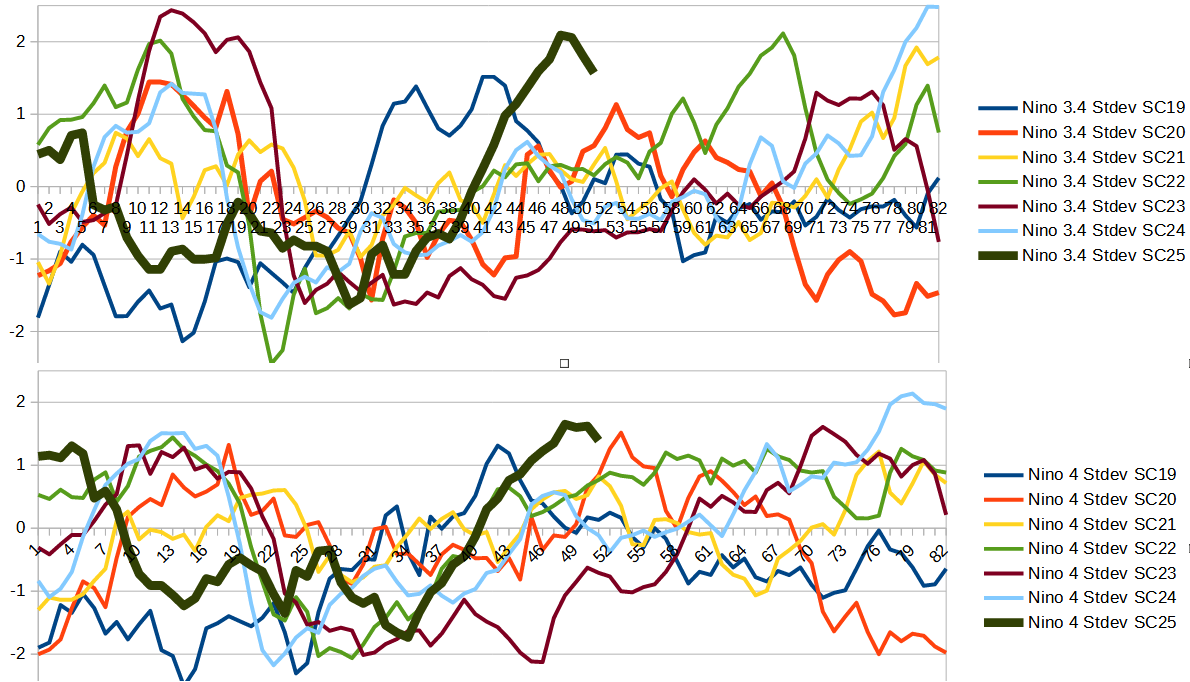 Looks like the closet match is SC19. The solar cycle lasted 10.5 years, beginning in April 1954 and ending in October 1964. |
|
|
|
Post by code on Mar 23, 2024 15:16:54 GMT
Not sure where to put this article so here it goes Extreme cold is killing millions of livestock animals in Mongolia, says Red Cross The Red Cross says about 4.7 million animals have died because of extreme cold and snow Philip Drost · CBC Radio · Posted: Mar 20, 2024 2:43 PM PDT | Last Updated: March 20 www.cbc.ca/radio/asithappens/red-cross-livestock-1.7150138Maybe there IS a climate crisis, a cold one? Same story different network |
|
|
|
Post by missouriboy on Apr 3, 2024 16:11:37 GMT
Sure looks like the period since late SC23 has been dominated by La Nina. Mann ohh Mann. Who woulda thought?
|
|
|
|
Post by missouriboy on Apr 5, 2024 22:13:40 GMT
Amazing how well "The Great Climate Shift of 1976 stands out when viewed with ENSO Regions and UAH Lower Troposphere over the tropical Oceans. East Pacific ENSO Region 1+2 may now be showing a downward shift to pre-1976 levels? Colder water for longer periods of time. More South Pacific source? Back to something equivalent to the '70s )or lower) for US? Amazing change from a very large cycle (sunspots) immediately followed by low cycle 20. Many data sets show changes in that time period 70 years ago. And a previous period (SC12-14) 60+ years before that. Less data though. UAH Lower Troposphere temperature anomalies follow these pulses and have an overall upward drift of about 0.4 C. I believe it will drop as we progress ... losing essentially all of that upward drift down the back slope of SC25. So where did that heat come from that boosted mean ENSO values by +0.8C? Shift from the South Pacific ... or geothermal discharge pulse? Or? 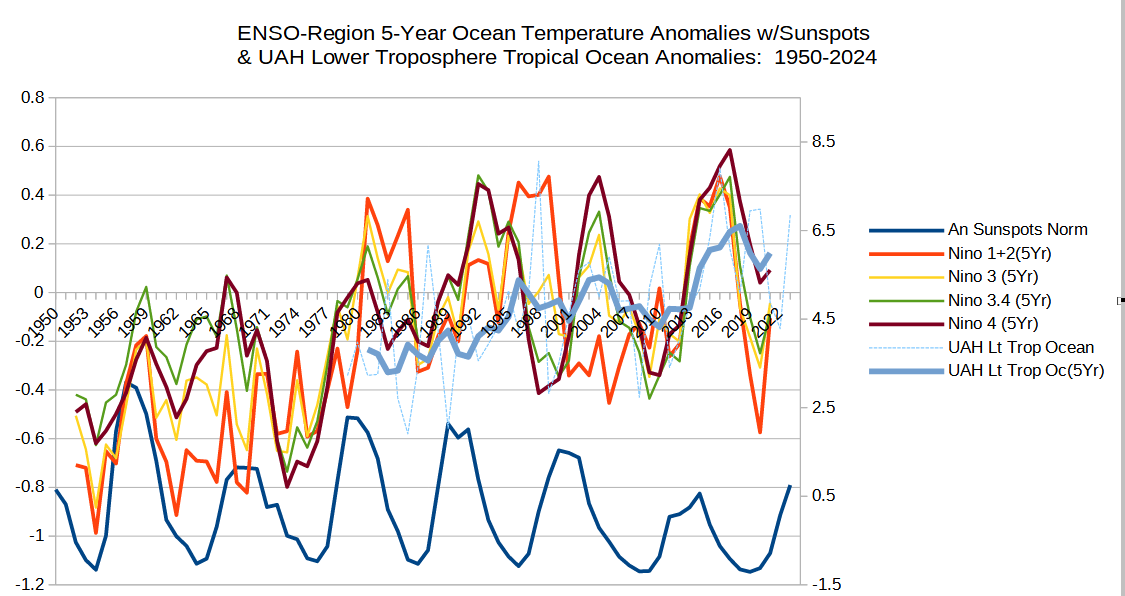 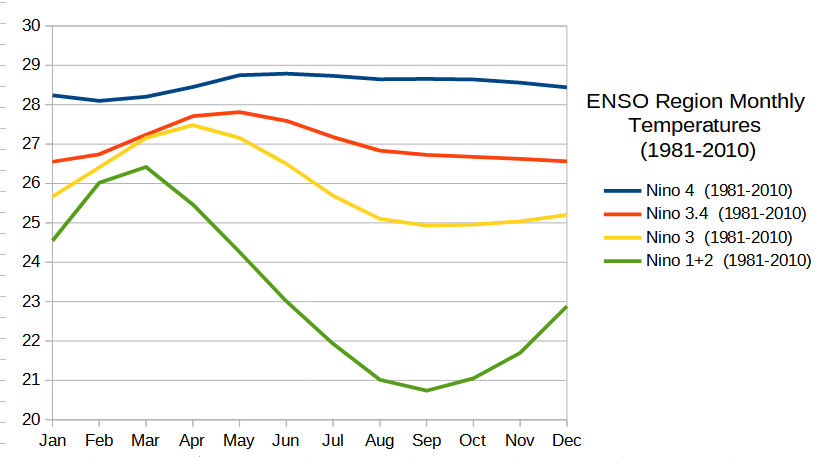 |
|
|
|
Post by douglavers on Apr 7, 2024 10:39:00 GMT
Frst Alpine snow of the season in Victorian alps tomorrow night.
|
|
|
|
Post by ratty on Apr 7, 2024 10:45:19 GMT
Frst Alpine snow of the season in Victorian alps tomorrow night. Early? |
|
|
|
Post by nonentropic on Apr 7, 2024 18:44:25 GMT
NZ has had several in the south through March.
|
|
|
|
Post by missouriboy on Apr 10, 2024 21:48:22 GMT
The SOI is very easily calculated and also probably uncorruptible. As a consequence they dare not fiddle with it, the two pressures are in all likelihood privately aggregated as a way of ensuring quality. How is the AMO calculated and could it be done privately? It could probably be continued (and back cast) using Tropical Tidbits data ... assuming they archive their daily sea surface data. Can't imagine they would just throw it away. |
|
|
|
Post by nonentropic on Apr 11, 2024 1:40:06 GMT
but a 100 years MB
|
|
|
|
Post by missouriboy on Apr 16, 2024 21:44:33 GMT
No. Only to the point that tropical Tidbits started. Don't have their database.
And the La Nina descent begins. So can we reperform the Cycle 20 downslope? Was long ... and cold. And we should have at least 4 or more. years left on SC25
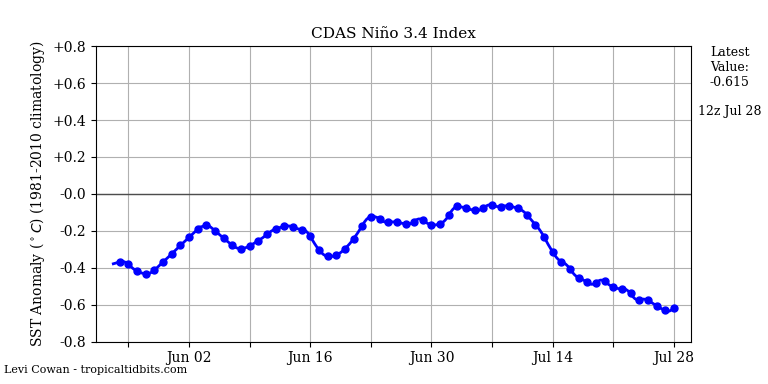 |
|
|
|
Post by missouriboy on Apr 20, 2024 15:38:34 GMT
|
|
|
|
Post by ratty on Apr 20, 2024 22:45:17 GMT
Are you lurking Astromet?
|
|
|
|
Post by Sigurdur on Apr 21, 2024 3:26:19 GMT
UAH details for March, 2024 are in. Lower stratosphere temperature anomalies over the oceans are plummeting. As are IR-2-Space values. All normal during ENSO. Lower troposphere anomalies over the oceans are leveling, and preparing to plunge as ENSO rapidly fades. Looking at the second chart (whole timeseries) note how much larger the visual accumulated IR-2-Space values have been for SC25 versus SC24. As El Nino fades into a likely LONG La Nina, expect those IR-2-Space values to soar back up. Without a big increase in cloud cover we may well set an accumulated record for shedding heat. Could be increasingly mighty cold as we descend that long(?) slope to solar minimum. Place your bets gentlemen and ladies. 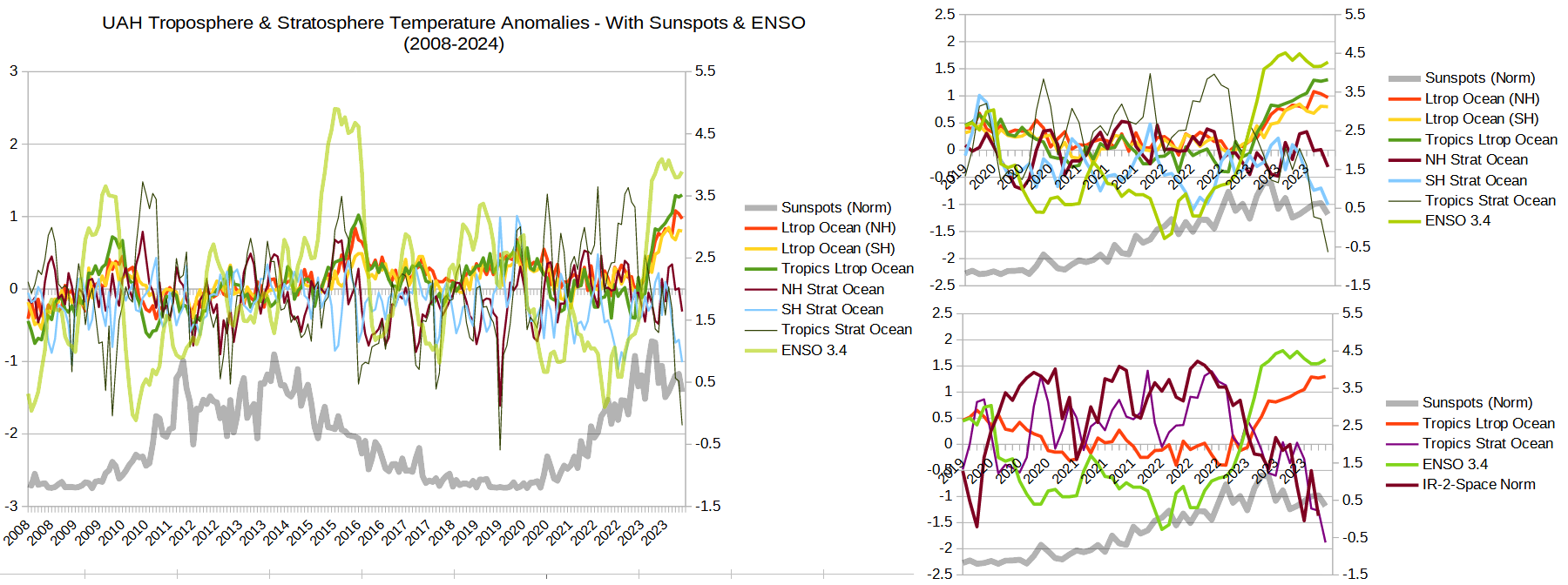  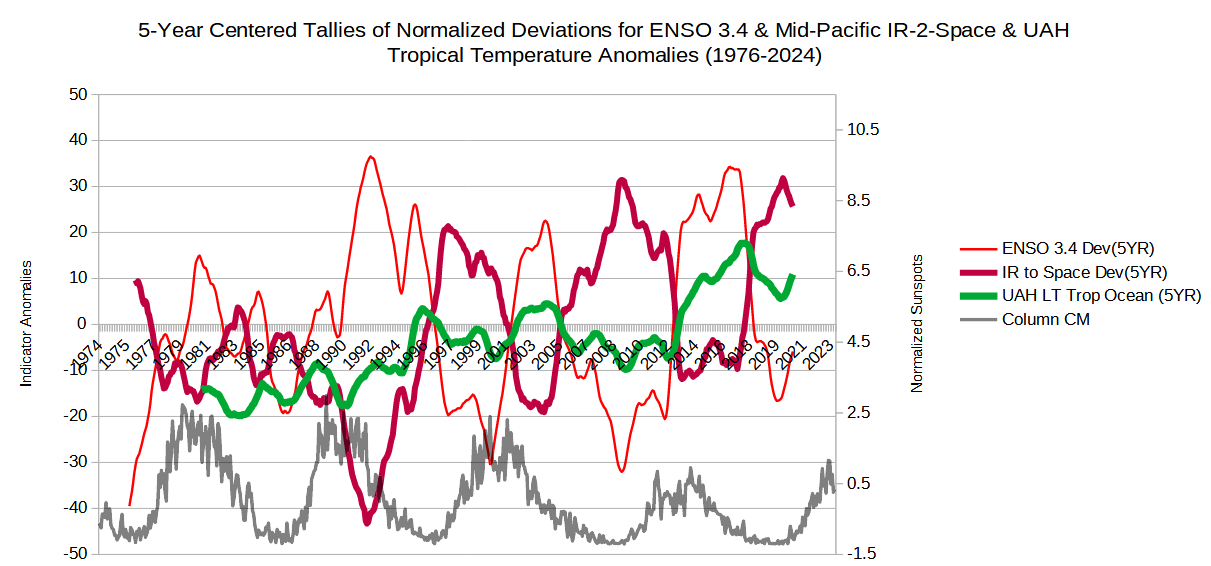 Clouds serve 2 purposes, cooling and warming. They also shield the Oceans from UV heating. Clouds have decreased worldwide, resulting in an increase in OHC. Will the increased OHC save us from severe cold? |
|